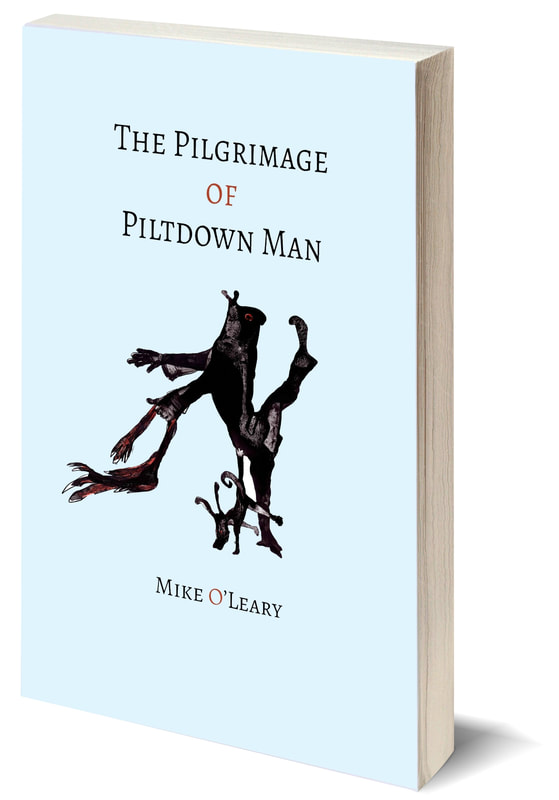Composition of Bodies
"Once upon a time… there was the Weald. Much of the Weald was smoke and flame – a place of blast furnaces and molten iron – and the mine pits; still, deep, dark cooling pools, from which would come the hiss of steam when white hot iron was plunged in. And scattered throughout the Wealden forest there were those charcoal burners’ enclosures – the hut and the kiln, the piles of cut limbs and branches, and the solitary, wrinkled charcoal burner. And when the charcoal burner died, as often as not his body rotted away in solitude and there was no-one to miss him, as the forest retook the enclosure – and the hut and the kiln subsided back into the ground. And there were plenty of charcoal burners scattered throughout the Weald to supply the iron foundries. Sometimes bits of body were collected – no-one knew by whom. Someone dark. Someone with a book. Someone in those woods. Something. Bits of body were fixed together – bits of this, that and the other. Higgledy piggledy wiggledy. A brain animated by a spark of fire from a bloomer – an ancient blast furnace; a clay chimney – or fluxed into awareness and motion by an organism usually associated with rot and decay – the body jerked into some sort of life. These composite creatures were known – they were feared of course, because they were emblems of death, pieces of blasphemy, but generally they caused no harm – they were like all of the ‘other people’ – something you might catch a glimpse of out of the corner of your eye; never to be seen straight on – something to propitiate with a gesture or a morsel of food – something to get away from. Frankenstein and Mary Shelley The stories spread; but they drifted away from whispered local legends and took other forms. The Shelley family lived on the edge of the Weald and those stories were passed down to Percy Bysshe Shelley who must have mentioned them to his lover and wife-to-be, Mary. Challenged to produce a horror story, she came up with Frankenstein’s monster and as, at the time of the challenge, she was surrounded by Alpine scenery, she set the story in that grand landscape – but at the heart of it there was really a wriggling organism that helped to bring life out of putrefaction in a lost Wealden clearing. And who was it who constructed that bogus creature at Piltdown? The medieval skull and orang-utan jaw that appealed to the newspapers and the public rather more than it did to palaeontologists. Was it Charles Dawson, who the newspapers called “The Wizard of Sussex”? Was he resentfully looking for acceptance by the academic world from which this non-Oxbridge man, a mere bookseller, felt excluded, by constructing something that would fit the naïve concept of a ‘missing link’ in a linear chain of human evolution; or was he drawing on old wizardly Sussex stories, piecing together bones, digging in old gravel pits, wondering what eyes were watching him from the woods, as he made his own Piltdown Man? And the missing link, the stitched-together segments of human and beast, of times and places, of skin, fur, feathers, flesh and stories; could this absorb the resentment of an English antiquarian? Or the wild and suppressed imagination of a woman considered to be an adjunct to a male poet? Or the thoughts of a hundred shunned and inarticulate charcoal burners? Or the gruntings and snufflings and immediacy of the beasts of the forest? A creature that was a piece of Sussex itself – soil and chalk, and the memory of a trillion crustaceans, compressed over aeons to create the rock and soil womb out of which all this was ripped: a geological, caesarean section. And then those hands, someone stumbling through the woods, stitching, snipping, cutting things up, stitching them together. A story. But it wasn’t so long ago that something gained some sort of a consciousness in the Weald. If he was missing, he didn’t know what he was missing from, and if he was a link, he had no idea what he could be linking. To call him Link is convenient, but he was no more or less of a link than anything else. Maybe he should be called Crow Man, or Magpie Man, because there seemed to be a lot of corvid in his make-up – but Link will do. Snuffling with leaves and soil in his nose – fluxed into life by a warmth created by rotting, decomposing organisms – or maybe by lightning, but probably never anything so sharp and sudden, Link lay for three days and three nights. His eyes tried to focus on the tree canopy, he turned his head to the side and coughed mucus into the dead leaves and live soil." References This entry is taken from Chapter 1 of The Pilgrimage of Piltdown Man by Mike O'Leary |
Explore |


